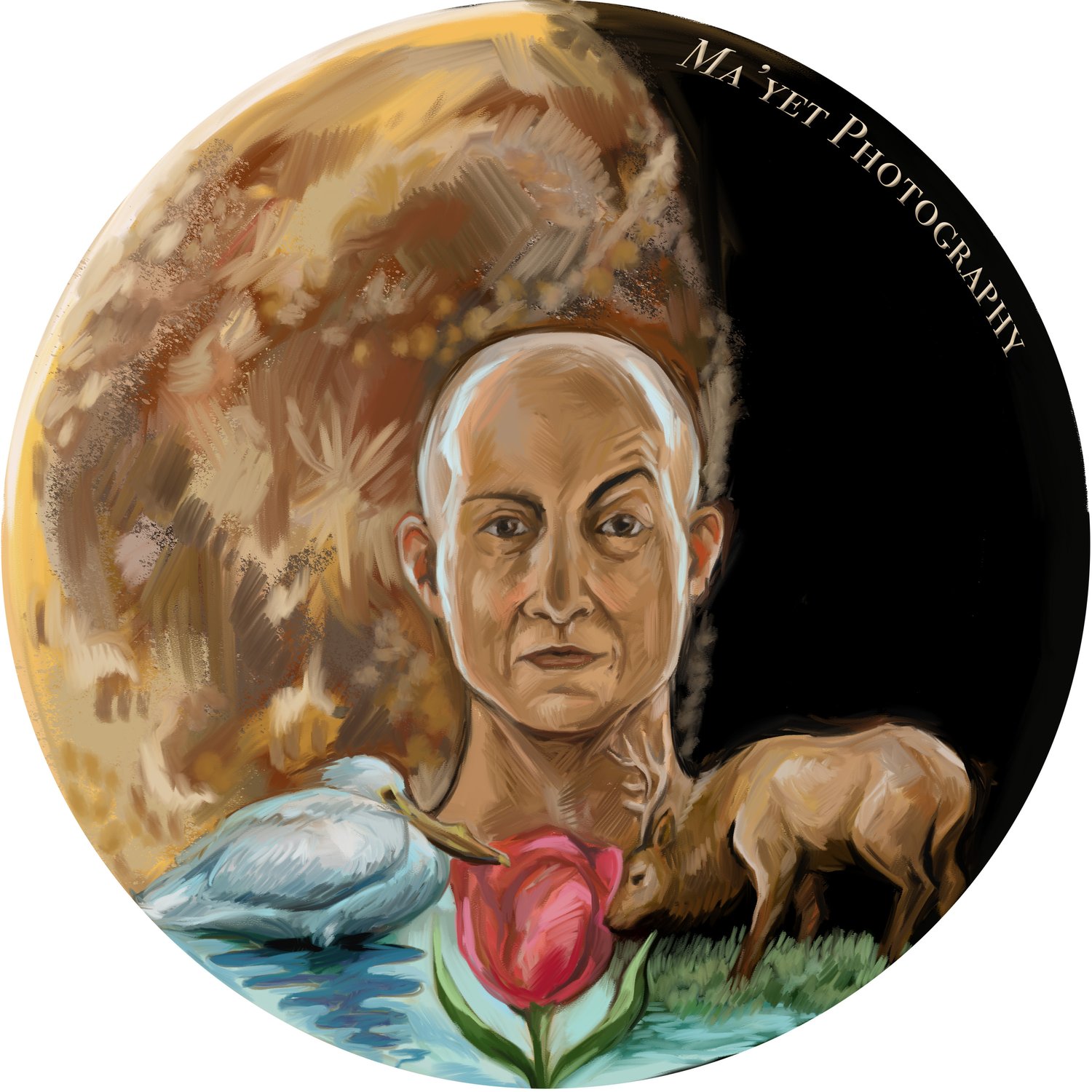 Image 1 of
Image 1 of


The Dividing Light: Waning Quarter in Oil and Shadow
Half in shadow, half in light—the waning quarter moon rises like a coin of time tossed across the sky. This image captures the lunar surface not in stark contrast, but in oil painting style, where every crater and ridge is softened by textured light, as though brushed into being by the cosmos itself.
This is not a painting. It is a photograph, digitally rendered to echo the timeless elegance of classical oil works. The result is a moon that feels tangible—as if you could reach out and smudge the shadows with your thumb.
In this phase, the Moon is three-quarters through its cycle, waning toward darkness. It rises near midnight and lingers into late morning, a quiet companion to dreamers, night owls, and those who chase silence across the stars.
The terminator—the line dividing light and dark—is where the lunar surface reveals its finest details. In this image, that edge ripples with depth: ancient highlands, impact craters, and mare plains carved by volcanic fire. These features, thousands of miles across, appear painted in fine relief—monuments to the Moon’s battered history and its quiet watch over Earth.
Though ever-changing, the Moon’s rhythm is constant. The waning quarter marks reflection, release, and transition—an in-between place, a celestial breath before the new moon's hush.
Through an oil painting lens, this moment becomes mythic: a reminder that even fading light can be profound.
Half in shadow, half in light—the waning quarter moon rises like a coin of time tossed across the sky. This image captures the lunar surface not in stark contrast, but in oil painting style, where every crater and ridge is softened by textured light, as though brushed into being by the cosmos itself.
This is not a painting. It is a photograph, digitally rendered to echo the timeless elegance of classical oil works. The result is a moon that feels tangible—as if you could reach out and smudge the shadows with your thumb.
In this phase, the Moon is three-quarters through its cycle, waning toward darkness. It rises near midnight and lingers into late morning, a quiet companion to dreamers, night owls, and those who chase silence across the stars.
The terminator—the line dividing light and dark—is where the lunar surface reveals its finest details. In this image, that edge ripples with depth: ancient highlands, impact craters, and mare plains carved by volcanic fire. These features, thousands of miles across, appear painted in fine relief—monuments to the Moon’s battered history and its quiet watch over Earth.
Though ever-changing, the Moon’s rhythm is constant. The waning quarter marks reflection, release, and transition—an in-between place, a celestial breath before the new moon's hush.
Through an oil painting lens, this moment becomes mythic: a reminder that even fading light can be profound.
Half in shadow, half in light—the waning quarter moon rises like a coin of time tossed across the sky. This image captures the lunar surface not in stark contrast, but in oil painting style, where every crater and ridge is softened by textured light, as though brushed into being by the cosmos itself.
This is not a painting. It is a photograph, digitally rendered to echo the timeless elegance of classical oil works. The result is a moon that feels tangible—as if you could reach out and smudge the shadows with your thumb.
In this phase, the Moon is three-quarters through its cycle, waning toward darkness. It rises near midnight and lingers into late morning, a quiet companion to dreamers, night owls, and those who chase silence across the stars.
The terminator—the line dividing light and dark—is where the lunar surface reveals its finest details. In this image, that edge ripples with depth: ancient highlands, impact craters, and mare plains carved by volcanic fire. These features, thousands of miles across, appear painted in fine relief—monuments to the Moon’s battered history and its quiet watch over Earth.
Though ever-changing, the Moon’s rhythm is constant. The waning quarter marks reflection, release, and transition—an in-between place, a celestial breath before the new moon's hush.
Through an oil painting lens, this moment becomes mythic: a reminder that even fading light can be profound.
